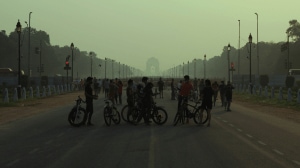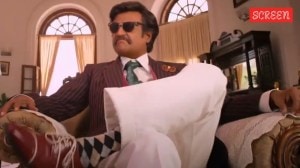Human Rights Matter
We have come a long way since 10th December 1948 when the Universal Declaration on Human Rights was adopted by the General Assembly in Paris...

We have come a long way since 10th December 1948 when the Universal Declaration on Human Rights was adopted by the General Assembly in Paris by an unanimous vote of 48 with 8 abstentions. It was a momentous achievement. The central theme of the Declaration is that individuals are not mere subjects but have rights against the state and its manifold instrumentalities. The Declaration embodies a common conception of human rights transcending differences in culture, political systems and geographical boundaries.
Although aspirational in character the Declaration is now accepted as part of international customary law. It has led to the passing of the International Covenant on Economic, Social and Cultural Rights 1966 (CESCR), and the International Covenant on Civil and Political Rights 1966 (ICCPR). Both these instruments have been ratified by 150 States. India ratified them in April 1979 with a few reservations. The CESCR and the ICCPR are monitored by the Committee on Economic, Social and Cultural Rights and the Human Rights Committee respectively. Under the Optional Protocol of the ICCPR there is a right of petition by individual complainants to the Human Rights Committee. To date 99 states have ratified the Optional Protocol. India is a conspicuous exception. The Human Rights Committee has substantially contributed to human rights jurisprudence and provided relief to victims of human rights violation. There are other notable human rights instruments such as UN Convention on the Elimination of All Forms of Discrimination Against Women 1979; Elimination of Racial Discrimination [1965]; and the Convention on the Rights of the Child (1989).
The cruel irony is that despite the Declaration and these human rights instruments there is still widespread violation of human rights in the world. No wonder the cynic’s taunt is that the only thing universal about human rights is their universal violation. What is forgotten is that international human rights instruments were not expected to instantly eliminate man’s inhumanity to man but by making violations of human rights visibly illegitimate they help to diminish their extent and intensity. Besides gone are the days when governments could blatantly trample upon human rights of its citizens and spurn moral, political and legal accountability under the pretext of State sovereignty. Today, how a State treats its citizens has become a matter of international concern.
Moreover, there has been heightened awareness and recognition of the human rights of several persons like HIV AIDS victims, the disabled, the elderly, women and children, minorities and displaced persons. At the end of the day, human rights do matter.
Seychelles and Parsis
Seychelles offers many delights. During my visit for delivering four Dr. Radhakrishnan Memorial Lectures, the most enjoyable experience was the atmosphere of total relaxation which overcomes the visitor on landing. There is no feverish activity around. Indeed there is lots of time to stand and stare and ‘‘to see in broad daylight streams full of stars like stars at night.’’ The comments by the audience after the conclusion of my lectures were appreciative of our country’s economic progress and stability, especially for keeping the flag of democracy aloft. However the invariable question, mostly by persons of Indian ethnic origin, was when will the inordinate delay in our justice delivery system, especially in the criminal field, be eliminated and why has not a single minister charged with corruption been convicted so far.
The Parsi Zoroastrian community to which I am proud to belong is unfortunately dwindling. The most delightful discovery I made was that there are sixteen Parsis in Seychelles. There is no record in the Seychelles archives of their arrival. It is believed that the first two Parsis, Temooljee and Kapadia, came around 1880. They were followed by other Parsis who engaged in business, acquired properties and occupied prominent positions. By the 1960s there were six families and six bachelors. The Parsi bachelors were said to be very popular with the young ladies of Seychelles which is not surprising in view of a normal Parsi’s innate attraction to beauty.
At their peak, the Parsi community had 34 members in all. At present there are 16 Parsi adults, most of them born and brought up in Seychelles, amongst whom is Pesi Pardiwalla, a distinguished lawyer and former Attorney General of Seychelles. Others are in the pharmacy business, are teaching advisors, company directors and shop owners. They are proud of their cultural heritage but are equally proud to be integrated as Seychellois. However, the most dynamic of them is Soona Oliaji, a senior member of the Indian community, who runs the famous shop, Temooljee. The dinner she hosted was fabulous both for the choice of guests and the abundant food on the table of which Dhanshak and Kababs naturally occupied the pride of place and could vie with the best served anywhere. May the tribe of Seychellois Parsis increase.






- 01
- 02
- 03
- 04
- 05

























